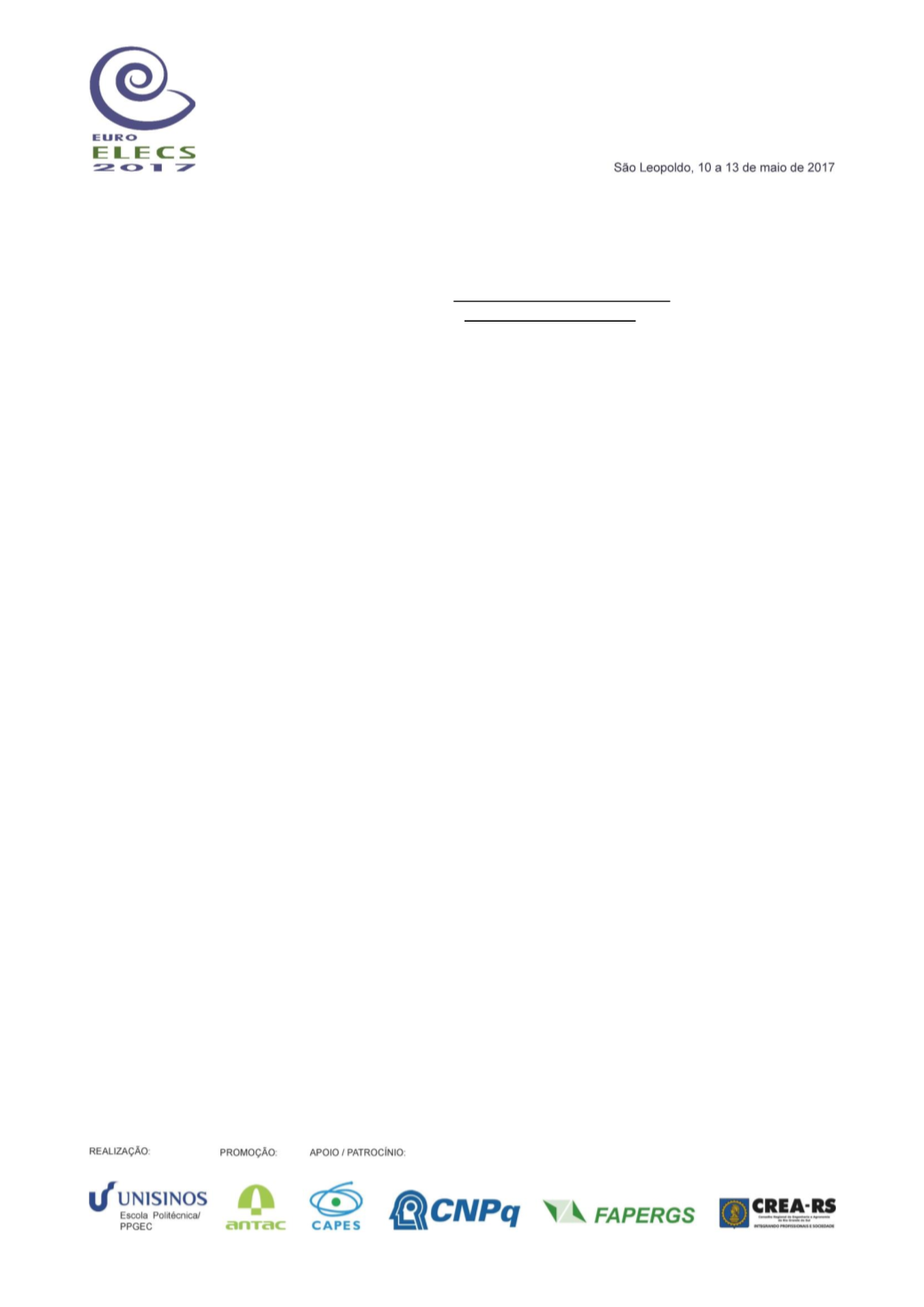

1697
245. A INFLUÊNCIADE ELEMENTOS DE OBSTRUÇÃO EXTERNANA
ILUMINAÇÃO NATURAL DE SALAS DEAULAEM EDIFICAÇÕES
ESCOLARES DE SERRA - ES
QUEZADA, Alana Lessa*
1
(alanaquezada@hotmail.com)PAGEL, Érica Coelho
2
(erica.coelho@faesa.br)1,2
Associação Educacional de Vitória
(AEV), Brasil
*
Autor correspondente
RESUMO
Uma iluminação adequada no ambiente escolar, principalmente se for natural, é um dos principais
fatores para um bom desempenho escolar. Dessa forma, este trabalho tem como objetivo detectar
a influência de elementos arquitetônicos de obstrução externa (frequentes em escolas brasileiras)
no desempenho lumínico de salas de aula. A pesquisa ocorreu em duas escolas da Rede Estadual
de Ensino, localizadas no município da Serra – ES. A metodologia é composta por medições
in loco
com um luxímetro digital em salas de aula e por simulações computacionais no
software Dialux Evo
em ambientes das fachadas norte e sul destas escolas. Foram simulados diferentes cenários de
aberturas com interferências externas em uma sala de aula padrão: presença de beiral, vegetação,
muro,
brises-soleil
, prateleiras de luz e balcão refletor. Os resultados das medições mostraram que
os níveis de iluminância encontrados nas salas de aula estão abaixo dos níveis recomendados. Nas
análises dos cenários simulados na fachada sul, os maiores índices ocorreram às 9h com céu
parcialmente encoberto. O melhor desempenho lumínico foi atingido com o uso do balcão refletor,
prateleira de luz e
brise
vertical, com médias de iluminância de 347, 231 e 227 lux, respectivamente.
Na fachada norte, a utilização de
brises
horizontais associados com prateleiras de luz apresentou
a melhor distribuição e desempenho lumínico, a média de 332 lux às 9h com céu claro.
Palavras-chave:
Arquitetura escolar, obstrução externa, iluminação natural, simulações.
THE INFLUENCE OF EXTERNAL OBSTRUCTION ELEMENTS IN THE
NATURAL ILLUMINATION OF CLASSROOMS IN SCHOOL BUILDINGS
OF SERRA – ES
Adequate lighting in the school ambience, especially if it is natural, is one of the main factors for a
good school performance. In this way, this work has the objective to detect the influence of
architectural elements of external obstruction (common in Brazilian schools) in the luminous
performance of classrooms. The research was carried out at two schools of the State Teaching
Network, located in the municipality of Serra - ES. The methodology is composed by measurements
in loco
with a digital luxmeter in classrooms and by computational simulations with Dialux Evo
software in ambiences of the north and south facades of these schools. Were simulated different
opening scenarios with external interferences in a model classroom: presence of eaves, vegetation,
wall,
brises-soleil
, light shelves and reflective balcony. Measurement results showed that the levels
of illuminance found in classrooms are below recommended levels. In the analysis of the simulated
scenarios at the southern façade, the highest indices occurred at 9 a.m with partially overcast sky.
The best light performance was achieved with the use of reflective balcony, light shelf and vertical
brise
, with illuminance averages of 347, 231 and 227 lux, respectively. At the north façade, the use
of horizontal brises associated light shelves presented the best distribution and luminous
performance, the average of 332 lux at 9 a.m with clear sky.
Keywords:
School architecture, external obstruction, natural Lighting, simulations.


















